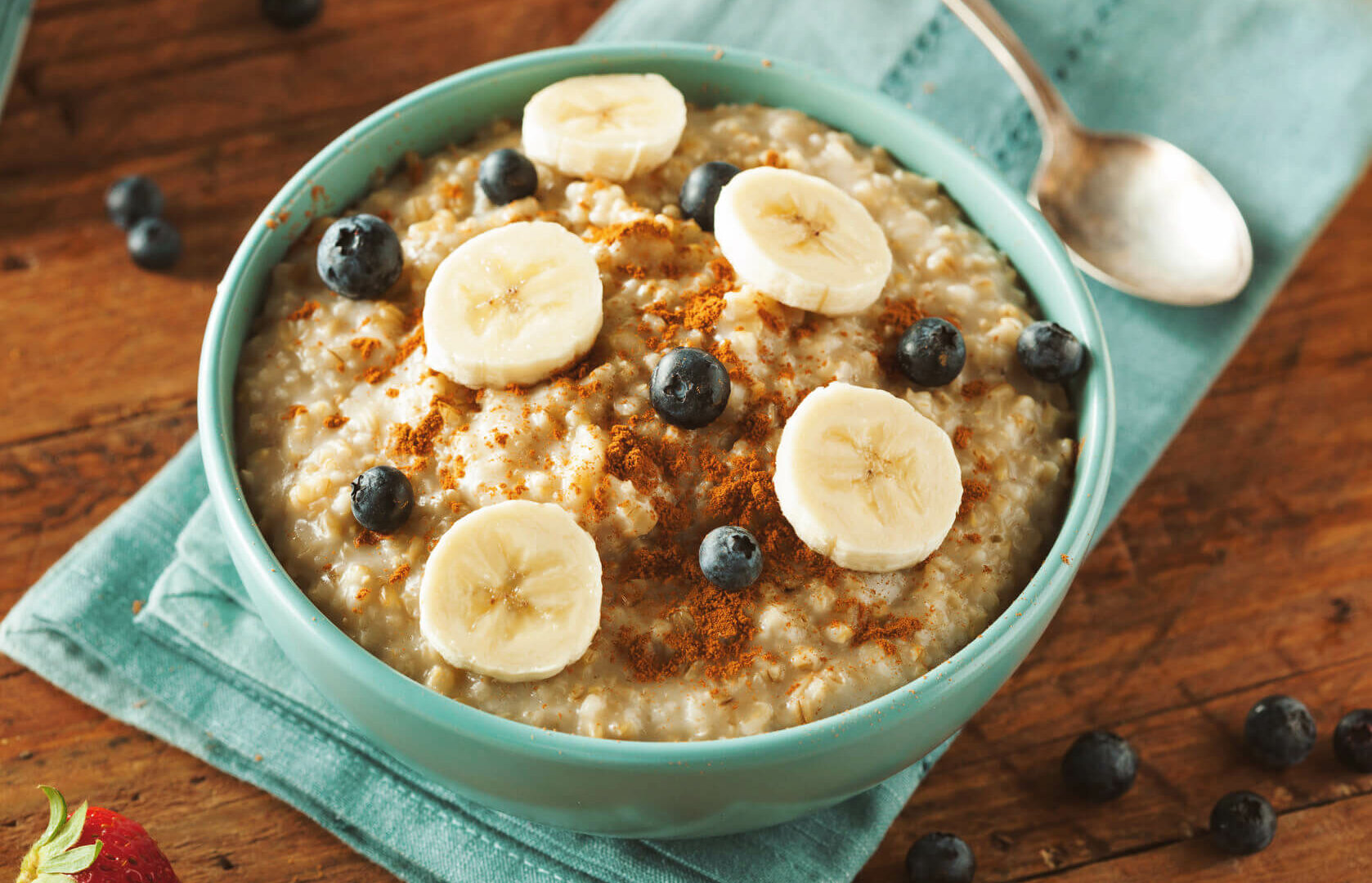Start feeling the hunger pangs of dieting and the first suggestion you hear is undoubtedly, “fill up on fiber!” Said to help improve satiety and improve fat loss efforts, fiber is the go-to starvation saver. Like most things in the fitness industry, most good ideas get taken to extremes, creating issues that may cause more harm than good in the grand scheme of physique enhancement goals. Considerations rarely discussed in social media are explained below to help you better balance your fiber intake and make your next dieting phase more comfortable and in turn, more productive along the way.
Fiber’s Role
Before I dive into how fiber is often overused, it’s important to first and foremost highlight its beneficial role in the human body. Technically labeled as “non-starch polysaccharides,” dietary fiber is a group of carbohydrate types from plant sources only partially broken down by the human digestive system. Dietary fiber helps provide roughage to aid in regular digestion, not to mention, many whole food sources also carry a high density of micronutrients beneficial to general wellness. [1][2]
Soluble vs. Insoluble Fiber
In general, dietary fiber can be broken up into two major sub-types: soluble (dissolves in water) and insoluble (doesn’t dissolve in water). Insoluble fiber is particularly beneficial since it essentially provides indigestible material that acts as a brush to push necessary substances along the digestive tract- promoting regular bowel movements. Soluble fiber on the other hand, attracts water, forms a gel-like substance, and contributes bulk to stool for regular, comfortable bowel movements. Digestion benefits, along with potential benefits in healthy cholesterol levels and heart health, make it a clear necessity in a healthy diet.
With that out of the way so this article isn’t misconstrued as suggesting fiber is bad, let’s get into the common issues that can arise when fiber intake is taken past necessary amounts when dieting, and the subsequent hindrance in performance and competition success.
Glycogen Replenishment & Dieting
If you’re dieting for any appreciable length of time, you’re bound to deal with a significant amount of hunger. Diet as slow and strategically as you want. Time your meals, pay close attention to weekly rate of loss, fill up on low calorie drinks and go through more chewing gum than a chain smoker does cigarettes. Try as you might, hunger is a cruel mistress who makes no exceptions in who she teases. When chewing gum and watching Cake Wars during cardio doesn’t work, the pervading physique development advice is to fill up on fiber to avoid hunger. Desperate to make fat loss gains without the pain, athletes take the advice and run with it.
High fiber flat breads, protein bars with enough fiber to keep an elephant regular, and of course bushels of vegetables fill athletes’ pantries throughout their diet. The first couple of days are often smooth sailing (in more ways than one), but certain forsaken physiological factors start becoming apparent, raining on the fiber festivities.
Sure, fiber creates bulk in the stomach that may temporarily help us feel fuller. However, another trait special to fiber is lack of contribution to muscle glycogen synthesis. Since dietary fiber is only partially digested by humans, virtually no energy in the form of glycogen is synthesized. Especially pertinent to physique athletes, this means the daily carb intake we consume through dietary fiber is providing little to no help to us in our training sessions, or even casual energy levels throughout the day.
The Breaking Point
The lack of energy provided by fiber isn’t much of an issue when overall fiber intake is at reasonable levels, and total carb intake is high enough that muscle glycogen is still readily replenished by the other starchy carbs consumed during the day. It does become an issue when an exorbitant amount of fiber is being consumed most days of the week, especially as total carbs decline and, as during a contest prep diet, smaller and smaller proportion of carbs are going toward muscle glycogen.
For example, let’s take someone that has been in prep for quite some time, and aside from re-feed days, is at something like 70 grams of carbohydrates per day. This is a relatively low amount of carbs to be consuming each day for a hard-training athlete, and making sure each gram is put to good use becomes more and more important with each macro reduction or cardio increase. At this point, an athlete is also very likely dealing with significant, consistent hunger.
Many in this situation may, with good intentions, load up on high fiber wraps and other “health” foods to curb hunger as much as possible. The problem is that at such a low carb intake, muscle glycogen is already largely depleted from day to day, and now has even less to replenish with. If the athlete is consuming a large majority of their daily carbs as fibrous carbs, that’s leaving a measly 30 grams or less of starchy carbs to actually support training performance and muscle glycogen. This exacerbates an already depleted environment and makes training intensity even more difficult to maintain.
If instead, athletes are consuming just enough fiber to stay somewhat regular (very common to become less and less regular as a contest prep progresses simply because less food is being consumed and needs processing), and filling the rest of their macros through starchy carbs, they can greatly improve workout performance. This in turn can lead to greater caloric expenditure per session, higher strength, better muscle retention, and higher energy levels throughout the day.
Later in this article, I’ll be covering a general rule of thumb for setting a daily fiber intake goal relative to total calorie intake. Using this rule of thumb, we can keep tabs on our intake to ensure sufficient intake for optimal digestion while keeping a “ceiling” intake in mind to prevent discomfort or unnecessary performance declines.
Bloating, Discomfort and the Stage
The seemingly more obvious drawback from over reliance on fiber when dieting, but surprisingly ignored by prep athletes (or anyone dieting really) is just how much GI discomfort can come from consuming too much fiber. I see it happen all the time and, sorry ladies, especially with the bikini athletes I prep. Prep gets into the nitty gritty stages and suddenly prep athletes begin experiencing and commenting on incredibly uncomfortable stomach issues and bloating.
Distended stomachs make it difficult to perform with full intensity during workouts and embarrassing to post any sort of progress updates on Instagram. It makes the entire process of contest prep far from enjoyable. After asking a series of questions to help narrow down the potential causes, it almost always become apparent that fiber intake should be lowered relative to total food intake, and especially relative to total carb intake.
Although it may seem counterintuitive after knowing fiber’s role in digestion, fiber can actually cause considerable GI discomfort and constipation if eaten in excess. Although adding bulk to prompt regular digestion is beneficial, past a certain point, the beneficial bulk creates a major “roadblock.” If consumed in excess, too much fiber can cause just as many constipation and bloating issues as too little. Especially in a sport where physiques are the main attraction, walking the fine line between the two extremes becomes crucial during contest or photo shoot preps.
Peak Week Considerations
The glycogen replenishment I mentioned earlier goes beyond just maximizing training performance when dieting. It also holds especially true when setting up a peak week plan before stepping on stage as a physique athlete. Assuming the athlete is truly conditioned enough to be competitive on show day, peak week is obviously time to focus on maximizing glycogen replenishment and helping the athlete step on stage looking as full and tight as possible. We add carbs in largely to maximize muscle glycogen through the actual storage of glucose into the muscle, as well as the water it brings along during storage (3g water for every 1g glycogen) to push the muscle tissue against the skin as fully as possible to really “pop” on stage.
If you’re still following me from earlier in the article, you know where I’m going with this section. If dietary fiber contributes very little to glycogen replenishment, then it’s pretty easy to see why having too much fiber during peak week can limit the benefits we receive from a strategic carb-up. Nowadays, I make a point to never assume athletes are taking this into account. Throughout the entire peak week, specific fiber goals are included each day to ensure we get just enough for adequate digestion without wasting potential glycogen replenishment by overdoing the fiber foods.
I’ve seen significant differences in athletes who use the extra carbs during peak week from Halo Top, Quest Bars, fiber wraps, and veggies compared to those covering their bases then focusing on starchy carbs to fill the majority of their carb goals. Not to mention, feeling and looking bloated on stage is one of the worst fears of any physique athlete. One sure fire way to make that nightmare a reality is to overkill the fiber foods during peak week.
So How Much is Enough?
I’ve found the easiest way to make sure sufficient fiber intake is consumed by the athletes I work with, as well as keep within a reasonable upper limit, is to use the dietary fiber recommendations provided by the USDA Dietary Guidelines. In the 2015-2020 guidelines, it’s suggested to aim for 14 grams of dietary fiber for every 1,000 calories consumed. [3] This intake is suggested to be sufficient for most individuals to have regular digestion and nutrient absorption. When adjusting macros from week to week, especially as calories consistently change during a reverse diet or contest prep, reverse calculating fiber intake can be really prudent.
Once your current macro (and as result total calories) intake is set, simply divide the total by 1,000 and then multiply that figure by 14 to determine your goal fiber intake. For example, someone consuming 2,500 calories would run the calculation as:
(2,500 calories ÷ 1,000 calories) = 2.5
(2.5 x 14 grams) = 35 Grams Dietary Fiber Daily
Now as with most aspects of a nutrition strategy, there’s always room for individual differences. This serves as a really solid starting point, but then it’s important for each individual to monitor their digestion and GI comfort over the course of a week or so. The athlete can then adjust fiber intake (+/- ~5-10 grams) to find the sweet spot that will allow him or her to feel good and perform maximally.
Face the Fiber Facts
The idea of using fiber as a tool to support satiety is understandable. However, when it comes to reaching extremely lean body composition like that required for success in physique competitions, being constantly hungry is just a fact we need to face as physique athletes. We can try our damndest to avoid it, but the reality is if we’re truly getting to competitive conditioning, it’s going to happen. Period. Rather than refusing to accept it, we can focus on keeping fiber in a healthy balance in relation to our intake, and using our carb intake strategically to maximize other aspects of our prep like energy levels, training performance and optimization of muscle glycogen stores for a better overall physique when it comes time to step on stage and strut our stuff.
References
- Anderson, J. W., Baird, P., Jr, R. H., Ferreri, S., Knudtson, M., Koraym, A., . . . Williams, C. L. (2009). Health benefits of dietary fiber. Nutrition Reviews, 67(4), 188-205. doi:10.1111/j.1753-4887.2009.00189.x
- Chandalia, M., Garg, A., Lutjohann, D., Bergmann, K. V., Grundy, S. M., & Brinkley, L. J. (2000). Beneficial Effects of High Dietary Fiber Intake in Patients with Type 2 Diabetes Mellitus. New England Journal of Medicine, 342(19), 1392-1398. doi:10.1056/nejm200005113421903
- Dietary Guidelines for Americans 2015–2020 8th Edition. (n.d.). Retrieved December 10, 2017, from https://health.gov/dietaryguidelines/2015/guideli

